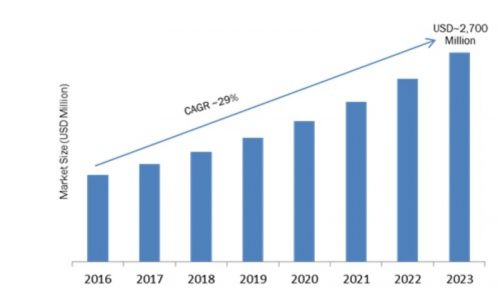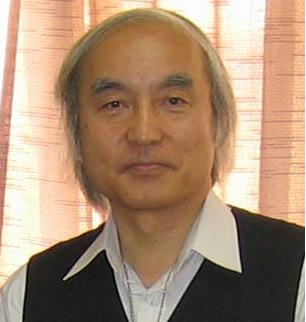Theme: Infinite Connections of Robotics and Control Systems
Robotics 2019
- About Conference
- Session and Tracks
- Scientific Session(not limited to..)
- Market Analysis
- Past Conference Report
Conference Series LLC LTD is a renowned organization that organizes highly notable conferences around the world. Robotics 2019 welcomes all the associates around the globe which is going to be held during November 11-12- 2019 in Tokyo, Japan.
The main purpose of the conference is to increase awareness about Robotics 2019. The Robotics certification corporation offers several options for board certification in Robotics Certification. Robotics is an intentional method and ensures that Technologist, Professionals, Industrialists, Researchers, Innovators and students must have proper knowledge and qualification of a specific speciality.
Robotics Conference is a global platform to discuss and learn about Artificial Intelligence, robotics, Big Data, Artificial Intelligence and Automation.
B2B Meetings, Panel Discussions, Industry expert interactions, Roundtable meetings, Best Poster awards, and Best Oral presentation awards, Young Researcher Forums, e-Poster presentations, Video presentations by the experts from both Industry & Academic.
Conference Series Organizes 1000+ Global Events Every Year across the USA, Europe & Asia with support from 1000 more scientific societies and Publishes 700+ Open access journals which contain over 100000 eminent personalities, reputed scientists as editorial board and organizing committee members.
Why to Attend:
Robotics 2019 conference brings together experts, leading researchers, scholars, scientists, professors from fields of Physics, and other related sectors to interact and interchange ideas about the situation of the art technologies related to Artificial intelligence, Robotics and Internet-related things. This conference will also provide an insightful understanding to the problems arising out of the Artificial Intelligence and Robotics. Robotics 2019 provides an Opportunity to communicate with prominent Scientists, researchers, Business Leaders, experts from all over the world. The little effort put by the Robotics conference 2019 will help us in taking a big step in the field of Artificial Intelligence, Robotics, mechatronics and Internet of Things.
Target Audience:
• Directors of companies
• Researchers
• Professors
• Lecturers
• Scientists
• Students
• Managers & Business Intelligence Experts
• Research students and Research Institutes
• Advertising and Promotion Agency Executive
Track 1: Robotics
A robot is a useful gadget, multitasking operator sketched to move objects, parts, tools or specific devices through variable programmed motions for the execution of a variety of tasks. Robots are the largest developing technological gadgets in the world. They perform many roles varying from space exploration to entertainment. Robots can be used in any circumstances and for any purpose, but today several are applied in hazardous environments, casting processes, or where humans cannot sustain. Robots can be changed in any form but few are made to resemble humans in appearance. This is done to assist in the agreement of a robot in specific replicative actions usually performed by people. Such robots attempt to replicate walking, lifting, speech, perception, and basically anything a human can do. Nowadays robots are inspired by nature, offering to the field of bio-inspired robotics
- Robots & Society
- Micro Robot
- Robots in Defence
Track 2: Human-Robot Interaction
Human-robot communication is the study of communications between humans and robots. It is often pointed to as HRI by researchers. Human-robot interaction is a multidisciplinary field with contributions from human-computer communication, artificial intelligence, robotics, common language belief, plan, and social sciences. Human-robot intercommunication has been a matter of both science fantasy and theoretical speculation even before any robots survived. Because HRI depends on knowledge of (sometimes natural) human communication, many phases of HRI are continuations of human communications topics that are much former than robotics.
Track 3: Industrial Applications of Robotics
Modern technology, for a majority of construction projects in fabrication, casting, machining and assembly facilities, will be an important contributor to fertility growth with plentiful gains in the variety of commodities in the face of difficult challenge and competition Industrial Robots have been in use for about 50 years. The Present-Day Robots at Work: Industrial Robots have come to play an important role in many industrial procedures today. These robots are almost always of the Jacquard type—with few human characteristics— rather than the doll-like form. The work that robots do can be classified into three major divisions: in the assembly and finishing of products; in the flow of materials and objects, and in the performance of work in environmentally difficult or dangerous conditions.
Track 4: Artificial Intelligence
Artificial intelligence is a performance based-system idea in a robot. Artificial Intelligence brings creative way to the robot to be able to render assistance to humans in changeable and dynamic environments, such as homes, hospitals, the workplace, and all around us Artificial Intelligence is a process of making a computer, a computer operated robot, or a software think logically, in a comparable manner the creative humans imagine. Artificial intelligence is performed by analysing how human brain conceives and how humans learn, decide, and work while seeking to solve a query, and then using the results of this study as a basis of progressing intelligent software and systems. In the actual world, knowledge has some unwelcomed assets.
- Role of AI in Industry
- Embracing the future AI
- Future scope of AI in different field
Track 5: Medical Robotics
Medical robotics is an imperative development that is related to the well-being of all individual .The usage of medical robotics becoming renowned due to their ample merits in the medical field. Medical robotics is a refreshing and dynamic field in medical science that involves various operations and boundless use of Tele presence. The development of Tele presence signifies the technologies that allow an individual to sense as if they were at another location without being actually there. Robots are utilized in the development of medicine to execute operations that are normally performed manually by human beings
Track 6: Humanoid Robots
A humanoid robot is a machine with its body frame designed to match the human body. A humanoid plan might be for operating purposes, such as communicating with human machines and environments, for test purposes, such as the study of bipedal movement, or for other purposes. In general, humanoid robots have a torso, a head, two arms, and two legs; though some patterns of humanoid robots may represent only part of the body, for example, from the waist up. Some humanoid robots also have heads outlined to replicate human facial characteristics such as eyes and mouths. Androids are humanoid robots built to aesthetically match humans
Track 7: Marine Robotics
Nowadays, Marine Robotics has developed from nascent exploration and control algorithms for underwater and surface transportations, to powered independent underwater transports routinely able to dive 6000 meters away. We have seen underwater gliders pass the Atlantic Ocean and unmanned surface platforms cross the Pacific. Marine Robotics as a field is fixed up to make a major enrichment to understanding large scale societal dilemmas. Growing marine robotic improvements will provide scientists with advanced tools to explore and utilise the oceans at an unusual scale, in a sustainable way.
Track 8: Mechatronics
It is also called mechatronic engineering, or a department of engineering that concentrates on the engineering of both electrical and mechanical operations, and also includes a mixture of robotics, electronics, computer, telecommunications, systems, control, and product engineering. As technology develops over time, several subfields of engineering have resulted in both adapting and multiplying. The purpose of mechatronics is to offer a design clarification that unites each of these various subfields. Basically, the department of mechatronics was nothing more than a mixture of mechanics and electronics, hence the name is a portmanteau of mechanics and electronics; however, as the complexity of technical systems continued to evolve, the definition had been widened to include more technical areas.
Track 9: Automation
It is the technology by which a method or procedure is performed with minimal human assistance. Automation is used for managing things such as machinery, processes in factories, heat operating ovens, switching on telephone networks, stabilization of ships, aircraft and vehicles with less human interference.
Automation includes applications varying from a household thermostat managing a boiler to a large industrial control system with thousands of input dimensions and output control symbols. In control complexity, it can range from simple on-off control to multi-variable high-level algorithms.
Track 10: Robotic Automation and Outsourcing
Before computers entered the real world, humans used to do all the tough work with restricted means accessible at hand. With the arrival of computers, extensive storage of data and calculations became feasible with a single mouse click. But still, a human was needed to run the system. Now, the evolving technology will allow taking humans too out from the equation.
Robotic Process Automation (RPA) is the use of the discovery that enables workers in the industry to design PC programming or a "robot" to catch and interpret current applications for managing an exchange, controlling information, activating reactions and speaking with other excellent structures.
Track 11: Multi Robot System
The field of the collaboration of multi-robot structures has been a protest of powerful research endeavours in the most current years. The fundamental thought is that multi-robot frameworks can work undertakings more efficiently than a solitary robot or can achieve tasks not executable by a solitary one. Moreover, multi-robot frameworks have focal points like expanding flexibility to conceivable vehicle charge, giving adaptability to the errand execution or taking preferences of appropriated detecting an invitation. The usage of a unit of transportations is of passion for some applications, for example, research of an unknown situation, route and arrangement control, demining, question transportation, up to playing group amusements which may include grounded, flying, submerged or surface vehicles. A conduct-based approach, specifically the Null-Space-based Behavioural approach, went for directing the company of a portable robot has been produced. The approach, utilizing a chain of command based on the rationale to join various clashing jobs, can satisfy each undertaking as indicated by their position in the order. The NSB has been broadly pondered and reproduced for various sort of vehicles i.e. portable robots, submerged robots and surface vessels while accomplishing a few development control missions
Track 12: New approaches in automation and robotics
Robotics, in the same way as other different innovations, experienced an expanded arrangement of desires bringing a reduction in the improvements and results between the 90s. In the most recent years, a few groups assumed that flying robots, usually known as automatons, would discuss these limitations anyway it appears to be far-fetched that the predominance of these flying devices will run and drive the robot development of course. This thing plans to summarise customary procedures used to collect and compile robots together with new designs that mean to develop and upgrade the progress in the field.
Track 13: Automated Mining
Automated mining involves the replacement of human labour from the mining process. The mining industry is shifting towards automation. It can still expect a large number of human resources, especially in the developing world where labour expenses are low so there is an inadequate incentive for increasing productivity. There are two types of automated mining- process and software automation, and the application of robotic technology to mining transportations and tools.
Track 14: Bio inspiration and Robotics: Walking and Climbing Robots
Nature has always been an origin of motivation and ideas for the robotics association. The main hurdles facing walking and climbing robots, and provides with innovative resolutions, ideas, technologies and ways. Human biped movement is an ultimate style of biological movement that is a highly evolved function. Biped movement by robots is a dream to be attained by the most highly evolved or combined technology.
Track 15: Service Robot Applications
A service robot is a robot that performs useful tasks for humans or equipment excluding industrial automation purpose. The distribution of a robot into an industrial robot or service robot is done according to its planned application.
Track 16: Nano-robotics
Robot that allows accurate collaborations with a Nanoscale issue or checks with Nanoscale measurement. Such kinds of devices are more recognised with microscopy or monitoring test microscopy, rather than the description of Nano-robots as a microscopic machine. Nano-robotics includes specific design problems such as power transmission, exploration, direction, movement, and on the spot calculations, which has been presented in the medical context of Nanomedicine by Robert Freitas
- Swarm Robotics
- Heart surgery
- Industrial robot
- Nano robotics Design and Control
- Biochips
- Rehabilitation robotics
- Bio robotics
- Tele robotics
- Pharmacy automation
Track 17: Robotics and its application
Manufacture automation is adopting more automation functions and automation exhibition than ever before. For many, it’s no longer a question of whether to automate, when they extend. Misconceptions of manufacturing as crude and demoralizing persist. Robotics and its applications include Space Robotics, Underwater Robotics Conference, Electric Mobility, Security Robotics, and Agricultural Robotics which mainly deals with the evolution of Automation and Robotics, smart robots for extra-terrestrial exploration and growth and realization of Artificial Intelligence, automation exhibition methods in complete underwater systems. This “Automation and Robotics-2016” is a 2016 trade show which is the initial effort to gather a number of researchers as well as the global experts from the automation and industrial engineering fields. Around 30% of researchers, 40% of Industrialists and 30% of Academic experts were going to turn towards this esteemed event
Track 18: Automation Systems
Automation methods practice in Systems combination of electronic security systems and home automation systems. Automation Systems and Robotics have been introduced as a standard of Safety Solutions for People, Real Estate Developers, Retailers, Government Agencies, Financial Institutions, and Multiplexes and just about everyone having a high-security remainder. These technologies help many industries to release a large number of home automation systems, smart automation systems. As a Mechatronic and Robotics Engineer, you will create and manage machinery with electronic and computer control systems, such as aircraft, robots, motor vehicles, cameras, power generators and mining and chemical plant machinery, industrial engineering. You will usually work with a multidisciplinary team to research, design, develop, maintain and manage technological engineering systems for the automation of industrial tasks to apply mechatronic or automated solutions for sending material, components or finished goods, which are usually computer-driven plans. it also assists in the manufacture of consumer products, such as cameras as well as video recorders and implements electronic and mechanical processes and computers to tasks where the use of human labour may be dangerous.
- Robotium
- Watir
Related Conferences:
2nd International Conference on Artificial Intelligence, Robotics & lot, July 16-17, 2019,
3rd International Conference on 3D printing Technology and Innovations, March 25-26, 2019, Rome, Italy
Annual Congress on Artificial Intelligence and Advanced Robotics, January 30-31, 2019, Bangkok, Thailand
6th International Conference and Exhibition on Automobile & Mechanical Engineering, July 08-09, 2019, Zurich, Switzerland
International Conference on Human Robot Interaction, March 11-14, 2019, Daegu, Korea
Conference on Military Robotics and Autonomous Systems, April 03-04, 2019, London, UK
Related Societies:
American Society of Mechanical Engineers
Institute of Electrical and Electronics Engineers
Society of Automotive Engineers
Robotics is in great demand. Japan's Artificial Intelligence showcase is assessed to develop from JPY 3.7 trillion of every 2015 to JPY 87 trillion by 2030. In 2015, Artificial Intelligence answers for the discount and retail sectors were valued at JPY 1.45 trillion, or about 39% of the complete market esteem, including the biggest Artificial Intelligence sub-section. By 2030, the transport sector is required to develop to JPY 30.48 trillion. Counting driverless autos, together these two areas will have a market evaluation of JPY 42.65 trillion or 49% of the total market value.

The mechatronics and robotics programs market can accomplish an excellent cost of USD 15 billion amid the estimated time frame of 2018 to 2023. The mechatronics and robotics courses are anticipating a rise of 15%, states Market Research Future. The robotics courses are making remarkable force because of its fruitful development in informative organizations. Robotics courses are earning accolades from primarily the automotive sector.
Little and medium-size organizations are discovering incredible utilization of mechatronics and robotics courses in their day by day production. Their basic concern for these areas is to limit operational value, while maintaining eco-friendly standards and compliance with supervisory requirements set by governments. Meanwhile, it improves business tasks and influences them increasingly proficient which can make significant open doors for the mechatronics and apply autonomy courses to advertise.
Why Tokyo,
Tokyo, the busy capital of Japan, blends the taste of both ultramodern and the traditional ethics picking the glaze from neon-lit skyscrapers to historic temples. Tokyo has also crowned the title as the world’s most affluent city to live in due to its easiest ways of rail and subway networks. The cultural casting of Tokyo is famous for its numerous museums; theatres; festivals; internationally noted cuisines; and professional sports clubs, including baseball, football, along with traditional Japanese crave Sumo Wrestling.
The focused attraction of Tokyo's Marunouchi district is the Imperial Palace known for its beautiful 17th-century parks guarded by walls and moats and which is still in use by the Imperial family. This Palace stands on the site where the Feudal Lord Ota Dokan built the first fortress ,in 1457 and is the primary residence for the Emperor of Japan and it is located at the focal point of Tokyo and built on the site of old Edo Castle.
The palatial attraction Meiji Shinto Shrine of Shibuya district is known for its surrounding woods of about 120,000 trees representing species that are found across Japan, a special ward in Tokyo. The shrine's limelight includes its Inner Precinct (Naien) with its museum containing royal treasures, and the Outer Precinct (Gaien), home to the Meiji Memorial Picture Gallery with its splendid collection of murals relating to the lives of the emperor and empress. The Sky tree of Tokyo is the highlighted tower for its broadcasting, incredible panoramic views from its restaurant and observation decks in Sumida, Tokyo, Japan. It became the tallest structure in Japan in the year 2010 and is about 2,080 ft by March 2011 that paved its way to achieve the title of tallest tower in the world, displacing the Canton Tower after the Burj Khalifa.
The National Museum of Tokyo is almost grounded with 100,000 important works of Japanese, Chinese, and Indian art, including more than 100 national treasure and was opened in 1938.The museum includes highlights of numerous Buddhist sculptures from Japan and China from the 6th century to the present hinged with collection of old textiles, historical weapons, and military equipment, historical Japanese clothing as well as Asian ceramics and pottery and many fine examples of calligraphy.
Other astounding attractions that can quench the thirst of tourism and worth travelling includes-the Cherry blossom garden at Ueno Onshi Park, Yoyogi Park, Ryogoku Kokugikan (The National hall of Sumo),Mt Fuji which is located at Honshu island of Japan, Disneyland & Disney sea, Tokyo Dome(Stadium) and the fabulous tongue tickling foods such as Sushi.
SCOPE AND IMPORTANCE:
It offers an industry overview and gives penetrations into the market trends, market size, market drivers and hurdles that affect the growth of the market. Data on important players and the market size as well as new product developments including research and development activities will also be covered. Secondary sources referred to for this study include magazines, journals, company financials, press releases, databases, annual reports, company websites as well as government sources.
Second International Conference on Advanced Robotics and Mechatronics were successfully hosted by Conference Series LLC Ltd in Valencia, Spain during December 03-04- 2018. The conference was planned around the theme “Boundless Implication of Automation and Control Systems in Mechatronics”. All the support and assistance from the Organizing Committee Members, Researchers, and the Speakers had made Advanced Robotics 2018 a successful event.
The conference was initiated by the Keynote Forum and we are chuffed to thank all our Keynote Speakers, Honourable Guests, and Conference Attendees for making the event fruitful.
The meeting was carried out through various sessions, in which the discussions were held on the following major scientific tracks:
-
Mechatronics
-
Robotics
-
Human-Robot Interaction
-
Automation
-
Role of Automation in Robotics
-
Control Systems
-
Intelligent Control Systems and Optimization
-
Intelligent Systems
-
Safety standards for robots and systems
-
Automation Tools
-
Applications of Automation
-
Control Theory and Optimization Technique
-
Control Methods
We thank all the members who supported the conference by promoting healthy conversations. Conference Series LLC Ltd reveals its gratefulness to the Organizing Committee Members for their ample support and helps towards Advanced Robotics 2018. We are happy to announce our third coming conference “3rd International Conference on Advanced Robotics, Mechatronics and Artificial Intelligence" to be held in Tokyo, Japan during November 11-12, 2019
Let us meet again @ Robotics 2019
Conference Highlights
- Robotics
- Human-Robot Interaction
- Industrial Applications of Robotics
- Artificial Intelligence
- Medical Robotics
- Humanoid Robots
- Marine Robotics
- Mechatronics
- Automation
- Robotic Automation and Outsourcing
- Multi Robot System
- New Approaches in Automation and Robotics
- Automated Mining
- Bio Inspiration and Robotics: Walking And Climbing Robots
- Service Robot Applications
- Nano-Robotics
- Robotics and Its Application
- Automation Systems
To share your views and research, please click here to register for the Conference.
To Collaborate Scientific Professionals around the World
| Conference Date | November 11-12, 2019 | ||
| Sponsors & Exhibitors |
|
||
| Speaker Opportunity Closed | |||
| Poster Opportunity Closed | Click Here to View | ||
Useful Links
Special Issues
All accepted abstracts will be published in respective Our International Journals.
- Journal of Advances in Robotics and Automation
- International Journal of Innovative Research in Computer and Communication Engineering
- Journal of Computer Engineering & Information Technology
Abstracts will be provided with Digital Object Identifier by



































